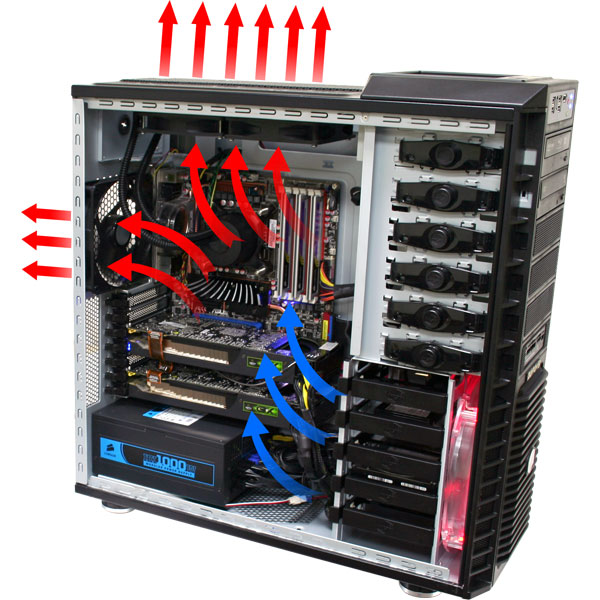How to Improve the Airflow of your Desktop Computer

Desktop computers are preferred by people who want more performance and don’t mind the bulk or the power consumption. Not only can desktops accommodate larger capacity drives, they also allow for multiple graphic cards for the best gaming experience. Moreover, if you build a custom machine, you can also overclock components like the CPU, GPU and RAM to squeeze out every small bit of performance you can. However, all this comes at a cost, and desktops produce much more heat compared to laptops. Consequently, it is important that your casing has a good airflow so that temperatures don’t reach dangerous levels.
Instructions
-
1
Your casing is the most important component when it comes to maintaining optimum temperatures during high intensity computing. Check your existing case for fan slots. You should have at least one slot on the back, one slot on the side panel (the one you open to install or remove hardware) and one slot on the front grill. If you have a high powered system and are looking to overclock it, you will need a case with at least 5 – 6 fan slots.
-
2
Visualize your case’s airflow. Ideally, the air should be entering your case from the front and leaving it from the rear. If you have a slot on the front grill, install a large 140mm fan or a smaller 120mm one. However, make sure you set it up so that it pulls air into the case instead of pushing it out. Most fans come with helpful symbols on the side to indicate airflow direction.
-
3
After setting up a fan to pull air into your case, you need to set one up on the rear to push it out. Again, it is best that you set up a large fan, but even if you have a small fan, ensure that it is set up correctly to push air out of the case.
-
4
The fan slots on the side panels also need to be set up properly for the best results. Typically, performance cases come with two slots, one above the other. If so, you need to set up the bottom fan to pull air into the case and the top fan to push out the hot air.
-
5
Your CPU also has a fan and usually people stick to the stock fan and heat sink that comes bundled with every processor. However, if you want, you can invest in an aftermarket air cooler, which will ensure better cooling for your CPU.

